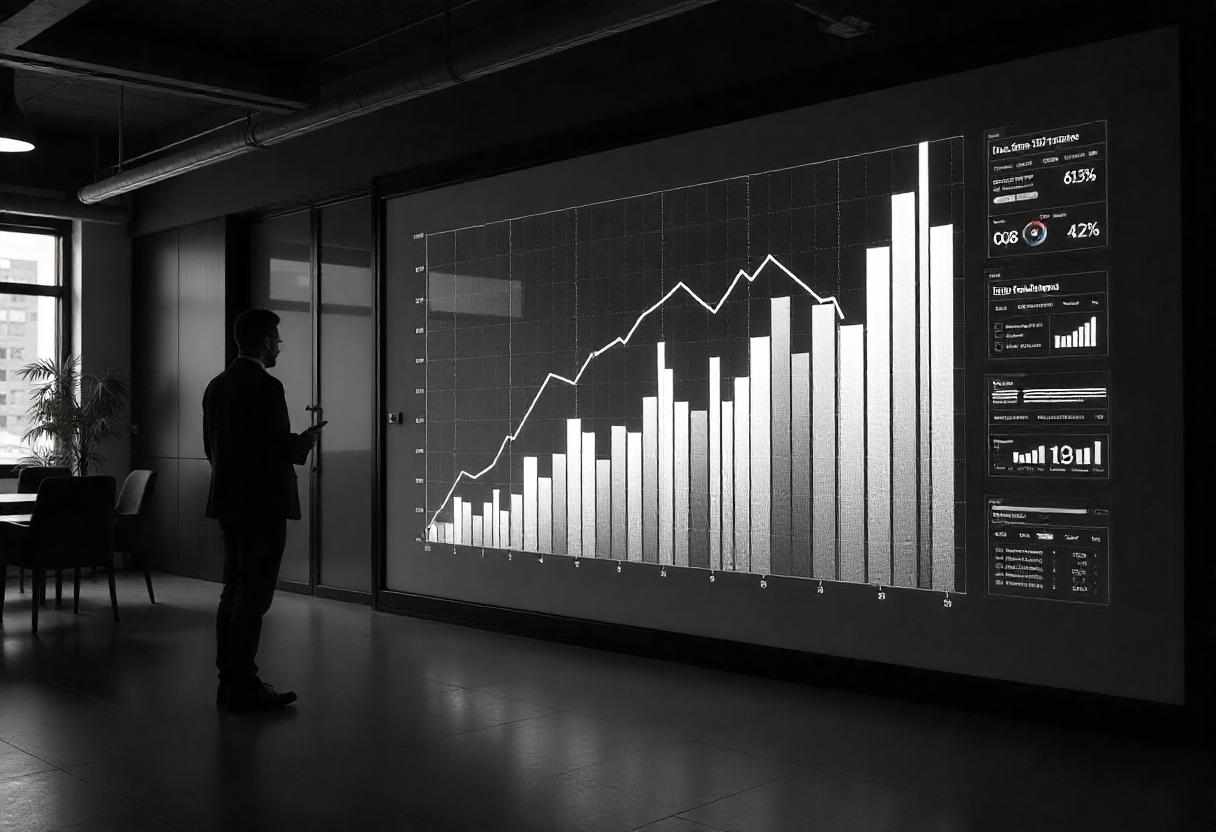Electric Two and Three Wheeler Controller Market Overview
The Electric Two and Three Wheeler Controller Market has gained considerable traction in recent years due to the growing demand for sustainable transportation. In 2024, the global market was valued at approximately USD 1.3 billion and is expected to expand at a CAGR of 18.6% over the next 5–10 years. The shift toward electrification, urbanization, government incentives, and environmental regulations is propelling the demand for efficient electric vehicle (EV) components, especially controllers, which serve as the brains of EVs, regulating motor functions and ensuring optimal energy usage.
Increasing fuel costs, advancements in battery technology, and the need to reduce vehicular emissions are compelling factors contributing to market expansion. Moreover, the growing popularity of electric two-wheelers (like e-bikes and scooters) and three-wheelers (used in logistics and last-mile delivery) has resulted in higher demand for intelligent and efficient controller systems. Technological innovation, such as regenerative braking and AI-integrated controllers, continues to shape the competitive landscape.
Electric Two and Three Wheeler Controller Market Segmentation
1. By Vehicle Type
This segment categorizes the market into electric two-wheelers and electric three-wheelers. Electric two-wheelers, including e-scooters and e-motorcycles, dominate the market due to high consumer adoption in urban centers, especially in Asia-Pacific. Their affordability, maneuverability, and government subsidies have made them a popular choice for daily commutes. On the other hand, electric three-wheelers, mainly used for goods transport and passenger carriage in developing countries, are rapidly gaining momentum. They are especially significant in India, Southeast Asia, and parts of Africa, where they serve as low-cost transportation solutions.
The demand in this segment is influenced by growing e-commerce logistics needs and the need for cost-efficient, emission-free transportation. For instance, companies like Piaggio and Mahindra Electric are expanding their electric three-wheeler portfolios, targeting commercial customers who seek low operating costs and regulatory compliance.
2. By Voltage Capacity
Controllers are segmented based on voltage ratings: 24V–36V, 48V–60V, 72V–96V, and Above 96V. Lower voltage controllers (24V–36V) are commonly used in basic e-scooters and e-bikes due to their limited speed and power requirements. The 48V–60V segment, however, sees the highest adoption rate, offering a balance between performance and cost. These are widely used in mid-range electric vehicles offering moderate speed and efficiency.
The 72V–96V and above segments are gaining traction in high-performance applications like electric motorcycles and heavy-duty three-wheelers, where more torque and higher speeds are required. For instance, performance models by companies like Ather Energy and Ola Electric use higher voltage systems, enabling longer range and better motor control. This segmentation is crucial as voltage directly affects vehicle performance, cost, and energy efficiency.
3. By Application
Applications are split into personal use, commercial transport, delivery services, and fleet management. The personal use segment remains the largest due to increased consumer adoption of electric scooters and bikes for urban commuting. Growth is largely driven by environmental awareness and rising fuel costs.
Commercial transport and delivery services represent emerging high-growth segments. Companies like Amazon, Swiggy, and Zomato are increasingly adopting electric two- and three-wheelers for last-mile delivery to reduce operational costs and emissions. Fleet management applications are also growing, with businesses seeking real-time analytics and control over EV operations. The use of smart controllers with GPS and connectivity features supports optimization, predictive maintenance, and centralized fleet operations.
4. By Controller Type
The market is segmented into DC controllers, AC controllers, Brushless DC (BLDC) controllers, and programmable smart controllers. DC controllers are traditional, low-cost options but are gradually being phased out due to limitations in efficiency and performance. AC controllers, although more expensive, offer better speed control and are preferred in commercial three-wheelers.
BLDC controllers are the most widely used due to their efficiency, reliability, and compactness. They dominate the two-wheeler segment. Programmable smart controllers are gaining momentum, especially in high-end electric motorcycles and commercial vehicles, offering features such as regenerative braking, AI-based load balancing, and real-time diagnostics. These smart systems improve ride quality, safety, and energy efficiency, contributing significantly to market value.
Emerging Technologies and Innovations
The Electric Two and Three Wheeler Controller Market is being reshaped by a range of emerging technologies and product innovations. One of the key developments is the integration of AI and machine learning algorithms into controller systems. These allow for adaptive motor control, intelligent power management, and predictive maintenance, ensuring longer vehicle life and improved efficiency.
Another significant innovation is IoT-enabled controllers that allow for remote diagnostics, over-the-air updates, and fleet performance monitoring. Such features are crucial for commercial users and fleet operators who require real-time data analytics to optimize operations. These systems also support GPS tracking, theft protection, and energy consumption reports.
Further, the market is witnessing the development of dual-controller systems designed for hybrid electric vehicles or vehicles with dual motors, offering better torque distribution and speed control. High-performance vehicles are also seeing the use of liquid-cooled controllers to prevent overheating during extended operations, particularly in hotter climates or under load-bearing conditions.
On the collaboration front, major EV OEMs are forming strategic alliances with semiconductor companies and startups. For example, partnerships between vehicle manufacturers and companies like Infineon, STMicroelectronics, and NXP are enabling the co-development of highly customized, integrated controller modules. These collaborations ensure compatibility, lower cost of development, and faster time to market.
Key Players in the Electric Two and Three Wheeler Controller Market
Bosch Limited: Offers a wide range of intelligent controllers for two- and three-wheeled EVs with integrated safety and energy management systems.
Curtis Instruments: Known for advanced BLDC and AC motor controllers with a focus on durability and programmability.
Delta Electronics: Supplies high-performance controllers with smart connectivity for commercial and fleet EVs.
Sevcon (BorgWarner Inc.): Specializes in advanced AC motor controller solutions, ideal for commercial three-wheelers.
Kelly Controls: Offers affordable and customizable DC and BLDC controllers, popular among OEMs and aftermarket users.
Ather Energy: Manufactures in-house smart controller systems tailored for high-performance scooters.
Hero Electric: Uses both in-house and partnered controller technologies to deliver reliable performance at mass-market scale.
Mahindra Electric: Focuses on three-wheeler applications with rugged controllers suitable for heavy-duty usage.
Challenges and Solutions
Despite promising growth, the market faces several challenges. One major obstacle is supply chain disruption, particularly for semiconductor components essential for controller manufacturing. Global shortages and geopolitical tensions can delay production timelines. To mitigate this, firms are diversifying their supplier base and investing in localized manufacturing.
High initial costs of advanced controllers, especially smart or programmable types, also hinder adoption in price-sensitive markets. As production scales and technology matures, costs are expected to decline. Additionally, government subsidies and tax incentives help offset the initial investment for both OEMs and consumers.
Regulatory variations across countries present another hurdle. Diverse safety, performance, and emissions standards can complicate product design and certification. Establishing universal regulatory frameworks or pursuing modular controller designs adaptable to different markets can be effective solutions.
Finally, limited awareness and technical expertise among local manufacturers and service technicians can hinder maintenance and adoption of advanced controller systems. Training programs, certification courses, and OEM-led workshops can address this gap and support long-term market growth.
Future Outlook
The Electric Two and Three Wheeler Controller Market is poised for substantial growth through 2035, driven by a confluence of technological, economic, and regulatory factors. Market valuation is projected to exceed USD 5 billion by 2032, driven by increased EV penetration across Asia-Pacific, Latin America, and parts of Europe and Africa.
Key growth drivers will include technological advancements in AI-powered and IoT-integrated controllers, the proliferation of smart cities, and the push toward zero-emission transportation. The expansion of charging infrastructure, particularly battery-swapping networks for two- and three-wheelers, will further support market adoption.
In the long term, modular and software-defined controllers may dominate, offering flexibility and upgradability as vehicle requirements evolve. With governments continuing to tighten emission standards and offer EV incentives, OEMs will be compelled to adopt more advanced and cost-efficient controller solutions.
FAQs
1. What is the role of a controller in electric two- and three-wheelers?
Controllers regulate the power flow between the battery and motor, managing speed, torque, and braking. They ensure optimal vehicle performance and energy efficiency.
2. Which regions dominate the Electric Two and Three Wheeler Controller Market?
Asia-Pacific, particularly China and India, dominates due to large-scale EV adoption, favorable government policies, and robust manufacturing ecosystems.
3. What are the most commonly used controller types?
BLDC controllers are the most prevalent due to their efficiency, compact design, and compatibility with most two- and three-wheeler EVs.
4. What are the key growth factors for the market?
Urbanization, environmental regulations, rising fuel costs, government subsidies, and advances in smart controller technologies are key drivers.
5. What challenges does the market face?
Supply chain disruptions, high costs of advanced systems, regulatory diversity, and limited technical awareness are major challenges.
"










Write a comment ...